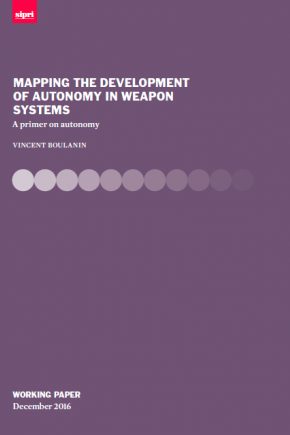Mapping the Development of Autonomy in Weapon Systems: A Primer on Autonomy
Since 2013 the governance of lethal autonomous weapon systems (LAWS) has been discussed under the framework of the 1980 United Nations Convention on Certain Conventional Weapons (CCW). The discussion is still at an early stage, with most states parties still in the process of understanding the issues at stake—beginning with the fundamental questions of what constitutes ‘autonomy’ and to what extent it is a matter of concern in the context of weapon systems and the use of force. A number of states parties have stressed that future discussions could usefully benefit from further investigation into the conceptual and technical foundations of the meaning of ‘autonomy’.
This working paper is an attempt to respond to that demand. It aims to clarify some basic understandings about autonomy: what it is, how it applies to weapon systems, how it works, how it is created and what the key technological enablers are. It is based on a substantial review of the literature as well as a background series of interviews with experts from various expert communities.
I. Introduction
II. Searching for a definition: What is autonomy?
III. Situating autonomy: Where is autonomy in weapon systems?
IV. Unravelling the machinery
V. Creating autonomy
VI. Conclusions

